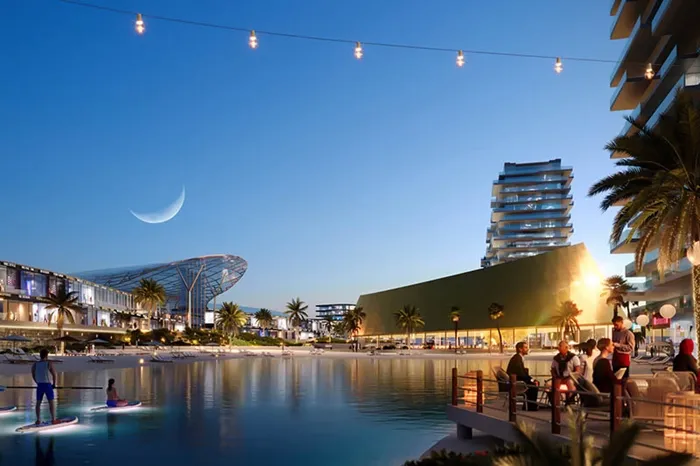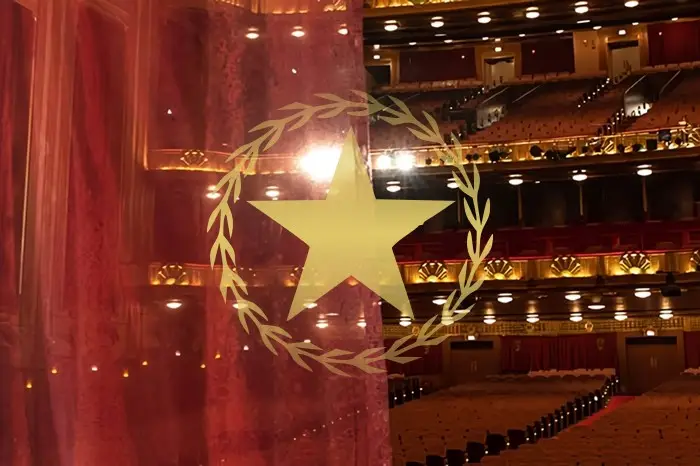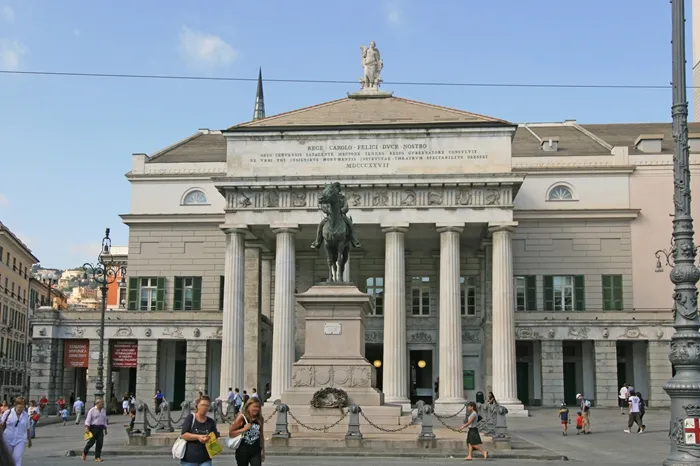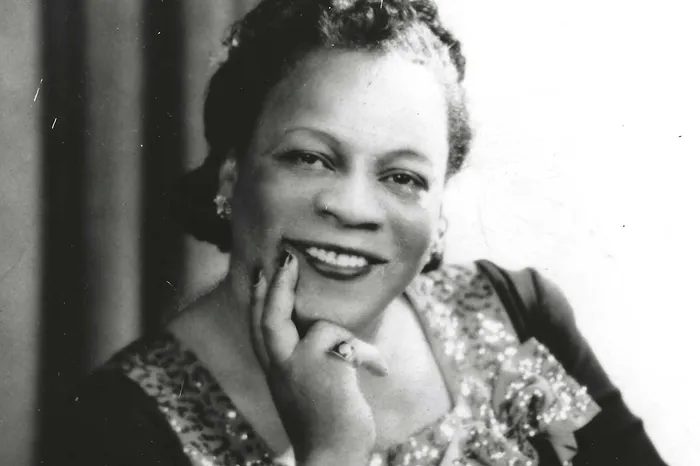
Dmytro Stepanovych Bortnyansky (28 October 1751, Hlukhiv, Hetmanate - 28 September (10 October) 1825, St. Petersburg, Russian Empire) was a composer, singer and conductor of Ukrainian-Lemko origin who lived and worked in St. Petersburg (Russia), author of 6 operas, chamber instrumental works, choral cyclic concertos, 10 two-chorus concertos, cherubic and sacramental works. He had a significant influence on the further development of Ukrainian and Russian classical music.
Biography.
Dmytro Bortnyansky's ancestors came from the village of Bortne (Lemkivshchyna, Galicia). The future composer's father, Stefan Shkurat, emigrated from the Polish-Lithuanian Commonwealth to the Hetmanate, where he became a resident of Hlukhiv, i.e. a "Hlukhiv bourgeois", changed his surname to Bortnyansky (after his native village), and in 1755 was elected to the position of Cossack centurion, becoming a member of the regimental sergeant major of the Nizhyn regiment. There, he married a Cossack widow, Maryna Dmytrivna Tolstaya (Tolstaya's surname was from her first husband from Muscovy).
Biography
He was born on 28 October 1751 in Hlukhiv, the capital of the Hetmanate and the main residence of Hetman Kyrylo Razumovsky. No information about the composer's date of birth has been preserved, but some researchers consider 28 October (old style) to be the most likely date, based on the fact that the most popular saint named Dymytrii (Dmytro) in Ukraine was St Demetrius, whose feast day falls on this day.
He received his initial musical education at the Hlukhiv Singing School, which trained singers for the court choir in St Petersburg. At a young age, Marko Poltoratsky distinguished him from his peers for his strong voice and musicality and took him to Moscow, to the St Petersburg choir chapel, where he studied with its director, Italian composer and arranger Baldassare Galuppi.
Later, on the instructions of Tsarina Elizabeth Petrovna, Galuppi took his pupil to Italy, where he studied for ten years in Venice, Bologna, Rome and Naples. In Italy, Bortnyansky's operas based on Italian librettos were successfully staged - Creonte (1776), Alcide (1778), and Quintus Fabius (1779). Bortnyansky participated in the activities of the Bologna Academy of Music. His operas were performed at the San Benedetto Theatre in Venice.
At the age of 28, Bortnyansky returned to St Petersburg, where he was appointed court chaplain, and in 1784 he was appointed chaplain of the "small court" of the heir to the throne, Pavel Petrovich. Under Bortnyansky, the St Petersburg court chapel reached a high level. During his tenure as the chapel director, Bortniansky composed many instrumental works, three operas based on French librettos, The Falcon (1786) and The Rival Son (1787), a pastoral comedy The Feast of the Signor (1786), a number of works for harpsichord, and others.
Bortnyansky was the first composer in the Russian Empire to have his music published. In 1782, his Cherubic was published in St. Petersburg, and in 1784, his three-voice chorus Let My Prayer Go forth was published. In 1793, Dmytro Bortnyansky's romances were published in St. Petersburg.
In 1796, after the accession of Paul I to the throne, Bortnyansky was appointed director of the court chapel, a position he held until the end of his life. Like his predecessors, Bortnyansky filled the chapel with mostly natives of Ukraine, in particular the Hlukhiv singing school. In 1802, the St. Petersburg Philharmonic Society was founded, and Bortnyansky's choirs were successfully performed at its concerts. In 1816, the composer was appointed chief censor of publications of sacred works.
At the end of his life, Bortnyansky continued to write romances, songs, and cantatas. He composed the anthem "A singer in the camp of Russian soldiers" to the words of the poet Mikhail Heraskov, dedicated to the events of the Franco-Russian War of 1812. In the last years of his life, Bortnyansky worked on preparing for the publication of a complete collection of his works, in which he invested almost all his money, but never saw it. The composer only managed to publish the best of his choral concertos, written in his youth, as "Spiritual Concertos for Four Voices, Composed and Revised Again by D. Bortnyansky".
Bortnyansky died in 1825 in St Petersburg and was buried at the Smolensk Cemetery on Vasilievsky Island, where a monument and obelisk were erected on the composer's grave. In the 1930s, in preparation for the destruction of the cemetery, a significant number of historical graves were vandalised, including Bortnyansky's.
Bortnyansky's complete works were published in 10 volumes in 1882, edited by composer Pyotr Tchaikovsky.
Characteristics of the works
fragments of compositions by D. Bortnyansky
concert "May God rise again" (file)
performed by a choir of students of the Kyiv National University of Culture and Arts
dance of the Furies from the opera "Alcide" (file)
Bortnyansky's musical heritage is quite extensive. Like most composers of his time, he wrote for the court environment: sacred music for the Court Singing Chapel and secular music for the "small" court in Pavlovsk and Gatchina.
Sacred music
Dmitri Bortnyansky
Bortnyansky's sacred music includes 35 four-voice choral concertos for different compositions, which were called psalms in his time, 10 two-voice concertos, 14 four-voice concertos "We praise God", 29 separate liturgical chants, a three-voice liturgy, sacred works for women's choir with mixed choir refrain, arrangements of ancient church chants from Kyiv and Bulgaria, and many others.
The most famous of his sacred works are the 35 four-voice concertos. Although there is no precise information about the time of composition of these concertos, it is believed that the vast majority of them were written in the 1780s and early 1790s. In most of the concertos, the composer uses psalm texts (usually individual stanzas) of a predominantly light nature. The only exceptions are Concertos No. 32 and 33, which use mournful supplicatory lines.
In terms of style, the concertos have distinctive features of the classical style. In terms of genre, they are associated with urban musical genres (cantata, march, Ukrainian romance song).
Structurally, concerts are three- or four-part cycles. In most cases, the movements have a tempo contrast, with the final movements being fast, but lyrical and lyrical-dramatic in nature. Concerts begin with slow movements. As a rule, the movements of the cycles are not thematically connected (with the exception of Concerto No. 21).
Hector Berlioz described his choral works as follows:
"...his works testify to a rare experience in grouping vocal masses, a wonderful understanding of nuance, and full-sounding harmony. And the most surprising thing is the freedom of placement of choral parts... In this harmonic fabric there were combinations that seem impossible: one could hear sighs, then a vague drowsy whisper, sometimes accents appeared, similar in strength to a cry that captures your spirit, squeezes your heart and chest, and then everything dissolved in an immense light decrescendo; it seemed that the choir of angels was leaving the earth and gradually disappearing in the heavenly heights." "
Opera work
snd:
Opera works by Dmytro Bortnyansky
Janetta's aria from the opera The Falcon
3:06
Performed by Solomiia Holiak
Elvira's aria from the opera The Falcon
3:24
Performed by Oksana Petrykova
If you have any problems listening, please see the help.
Bortnyansky composed 6 operas, the first three of which he composed in Italy to texts in Italian, and the last three in Russia to texts in French. Of the three Italian operas, only Alcide was ever published, while the third, Quintus Fabius, exists only in manuscript, and the first is lost. The operas were written in the tradition of opera seria, with a significant influence of the innovative trends of the time that brought opera closer to drama. In particular, in the opera "Alcide" the image of the protagonist is revealed in development, showing different states of his soul. Other innovative features include the tendency to dramatise recitative and to strengthen the dramatic function of the chorus.
Of the three operas of the Russian period, his second opera, The Falcon, is the most famous, having been staged after almost two centuries of oblivion at the Moscow Chamber Music Theatre in the 1970s and recorded on discs. All the operas of the Russian period are classified as lyric-comic, combining the traditions of French comic opera and Italian buffa opera.
In Ukraine, Bortnyansky's operas were performed in concert in 1984 by the State Philharmonic of the Ukrainian SSR in Italian and in 2000 by the Chamber Opera Society in Kyiv in Ukrainian, translated by Maksym Strikha, and Sokol (concert performances in 1995 by the Chamber Opera Society in Kyiv and in 1997 by the National Philharmonic of Ukraine, and a stage performance in 1996 by the Chamber Opera Society in Kyiv, all in Ukrainian, also translated by Maksym Strikha).
Instrumental works
Concerto for Clavier and Orchestra, D-dur, recorded at the Chestnut Piano Competition
Bortnyansky's instrumental works were composed in the second half of the 1780s, at the same time as his operas with French-language librettos. Only a small number of Bortniansky's instrumental works have survived - three sonatas for harpsichord, a concerto for cembalo and orchestra, a quintet and a Concert Symphony. These works were intended for salon music at the "small" court of the heir to the throne, Paul, and the harpsichord works were probably intended for performance by his wife, Sophia Dorothea of Württemberg.
In terms of style, Bortnyansky's instrumental works belong to the classical style. They were influenced by J.C. Bach's keyboard sonatas, Italian instrumental sonatas, opera overtures, symphonies, as well as the Mannheim and Viennese schools. The figurative sphere is characterised by a light and cheerful nature. It is characterised by liveliness of movement, dynamism that coexists with playful or cantilena lyrics and is not characterised by conflict or dramatic conflicts.
Most of the works are single-movement (two of the three keyboard sonatas) or are three-movement cycles (quintet, symphony, and one of the sonatas), with the extreme movements being fast and the middle movement slow. The first movements of the sonatas use the old sonata form with a characteristic predominance of exposition and no or weakly expressed thematic development. The finals use the rondo form.
Although the instrumental music is relatively easy from the technical point of view, researchers note in it "an unusual richness of artistic images, the highest creative intelligence of the composer". L. Kornii notes that the melody of the lyrical and dance themes contains Ukrainian national features.
Dmytro Bortnyansky at the Millennium of Russia monument in Veliky Novgorod
Influence on the further development of Russian and Ukrainian music
Bortnyansky's work had a significant impact on the further development of both Ukrainian and Russian music.
For almost half a century, Bortnyansky's life was associated with music education and the most important processes of the formation of musical culture in Russia, which is why Bortnyansky is considered a Russian composer in Russia. According to the Russian musicologist B. Asafiev, "Bortnyansky developed a style with characteristic phrases that has retained its strength for several generations. These typical phrases not only found their way to Glinka, but also to Tchaikovsky, Rimsky-Korsakov and Borodin."
At the same time, since the 1920s, Bortnyansky's work has been the subject of special attention by Ukrainian musicians. In his article "D. Bortnyasky and Modern Ukrainian Music" (1925), Stanislav Liudkevych called on Ukrainian musicians to develop the traditions established by Bortnyasky, "to dive deeper and more thoroughly into the great cultural treasury concentrated in Bortnyasky's works, to find the sources and foundations of our revival in it".
Traditionally, Ukrainian musicologists emphasise the use of intonations of Ukrainian folk songs in choral works, which was due to the fact that the composer's first musical impressions were received in Ukraine, and most of Bortnyansky's friends in the choir and his teacher Marko Poltoratsky were Ukrainians. In particular, Lidiia Kornii notes:
typical for Ukrainian songs descending lyrical sextet V - VII# - I degree (on the example of choral concertos: No. 13, end of Part II and No. 28, finale)
typical phrases with a diminished quartet between the third and seventh degrees in the minor,
typical for lyrical songs mournful intonations with an increased second between III and IV# degrees in minor.
S. Liudkevych also notes Ukrainian intonations in D. Bortnyansky's works:
...although he adopted the manners of the Italian style and became a reformer of church singing in St. Petersburg, all his works (even with the "fugues" so repugnant to our spirit) hid so much typically Ukrainian melody that he has now become unpopular with Muscovites, and every foreigner hears in them something unknown to himself, original.
The influence of Bortnyansky's work can be observed in the works of prominent Ukrainian composers M. Lysenko, K. Stetsenko, M. Verbytskyi, M. Leontovych, M. Dremliuga, L. Revutskyi, K. Dominchen, B. Liatoshynskyi, etc.
Memory
Jubilee coin "Dmitry Bortnyansky"
The Sumy College of Culture and Arts, a street in Lviv, and the Academic Chamber Choir at the Chernihiv Philharmonic are named after Dmytro Bortnyansky.
Dmytro Bortnyansky Street also exists in Boryspil, Drohobych, and Chernihiv.
In Hlukhiv, the composer's hometown, a monument to the composer was erected by Inna Kolomiets.
In the early 1990s, People's Artist of Ukraine Natalia Svyrydenko (harpsichord) created the Dmytro Bortnyansky Trio (harpsichord, flute, soprano), which actively promoted the composer's work.
To mark the 270th anniversary of the composer's birth, the National Bank of Ukraine issued a commemorative coin dedicated to him.
List of works
Opera
with libretto in Italian
"Creonte (1776, Venice)
"Alcide (1778, Venice)
"Quintus Fabius (1779, Modena)
with libretto in French
"The Feast of the Signor (1786, Pavlovsk)
"The Falcon (1786, Gatchina)
"The Rival Son or Modern Stratonica (1787, Pavlovsk)
for symphony orchestra
concert symphony
chamber and instrumental works
Septet
Quintet
Quartet
8 sonatas for harpsichord
pieces for cembalo and violin.
cantatas
including "A singer in the ranks of Russian soldiers" (words by V. Zhukovsky, 1812)
choral works
spiritual concertos (35 for four-voice mixed choir, 10 for double choir)
hymns dedicated to noble persons
songs of praise (4 for two-voice choir, 10 for eight-voice choir, communion songs)
2 liturgies
cherubic (7 for four-voice choir, one for eight-voice choir)
Sacred music in Latin ("Ave Maria", "Salve Regina", motets)
Vocal pieces based on texts in foreign languages, translated into Ukrainian
Translator - Borys Ten
Romance "Ismene believes in me with her heart"
Romance "Hymn to the Moon"
The romance of Paul and Virginia.
The Doctor's aria from the opera The Rival Son.
Carlos's aria from the opera The Rival Son.
Janetta's aria from the opera The Falcon.
Jeanette's romance from the opera The Falcon.
Aria by Perlajoie from the opera Le nozze di Figaro.
Babette's aria from the opera La Dolce Vita.
Loubin's aria from the opera La Dolce Vita.
Arietta Jeannotier from the opera La Dolce Vita.
Arietta Peretti from the opera La Dolce Vita.
A duet between the maitre d' Jacques and Jeannotier from the opera La feasta del senor.
Translated by Maksym Strikha
Opera The Falcon, in full
Opera Alcide, in full
Sanshetta's aria from the opera The Rival Son



